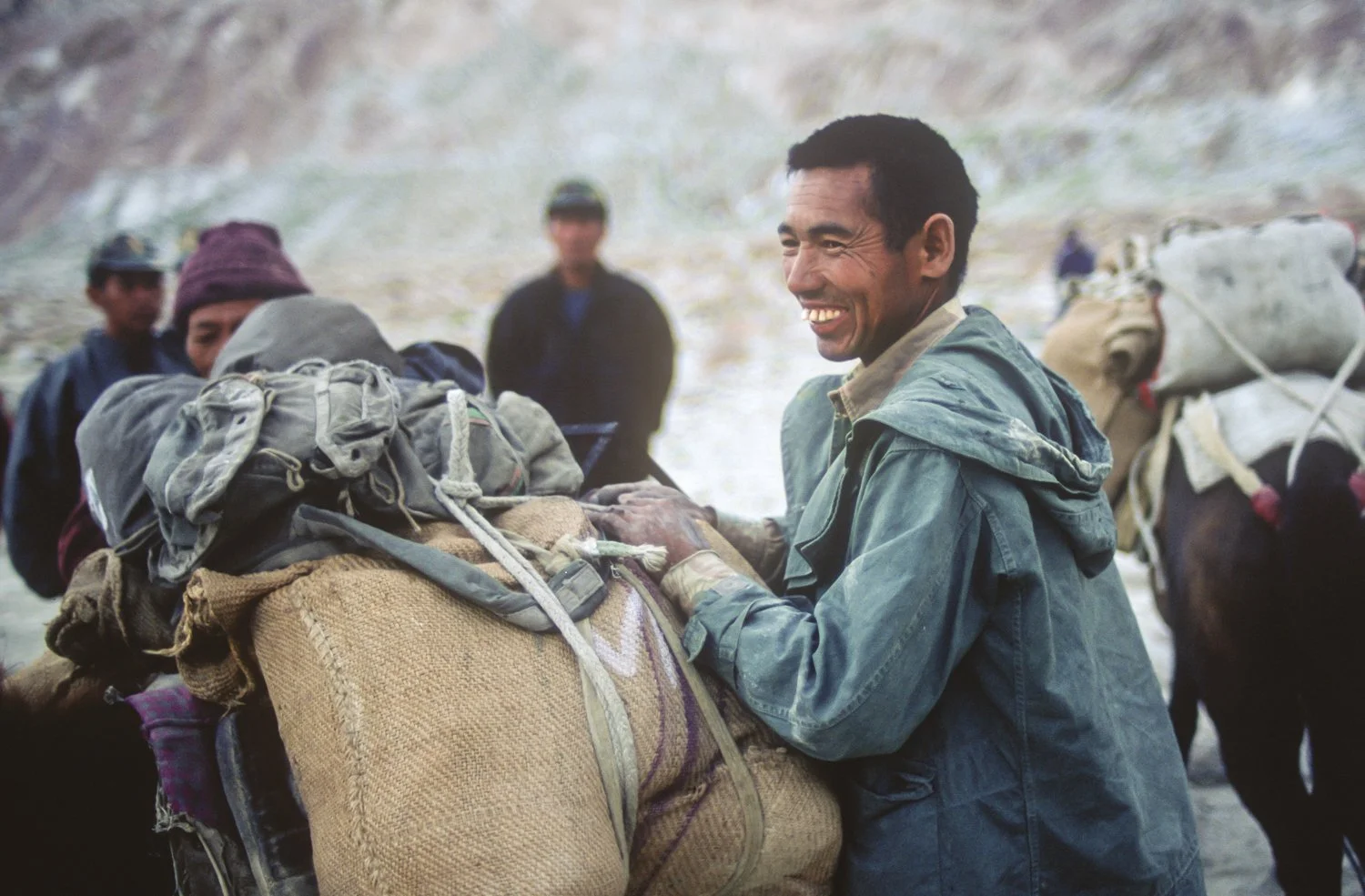Traces of Silk
The Eastern Karakoram forms one of the most unusual and formidable regions of the Himalayan range. Geologically diverse and averaging 16,000 - 21,000ft in altitude, the region has a unique history as a trade link. For centuries, travellers, pilgrims, and merchants carrying such items as precious stones, silks, pashmina wool and brick tea, plied the traditional silk routes between Ladakh and Central Asia. They were the lifeblood of trade between the North Indian plains and the vast, high altitude plateau of Western Tibet and Sinkiang until 1949 when political pressures sealed the borders with China and Tibet.
In a quest to further her Ph.D. study on the history of trade in the Western Himalaya, Amita Satyal managed to secure permits for our expedition to enter the restricted region of the Upper Nubra/Shyok Watershed and retrace the principal summer silk route from Leh to the Karakoram Pass on the border with China. The renowned explorer, Sven Hedin had described the Upper Shyok as "a frightful mousetrap", and the Leh - Turkestan track as “like an enormous bridge of sighs ....”






















